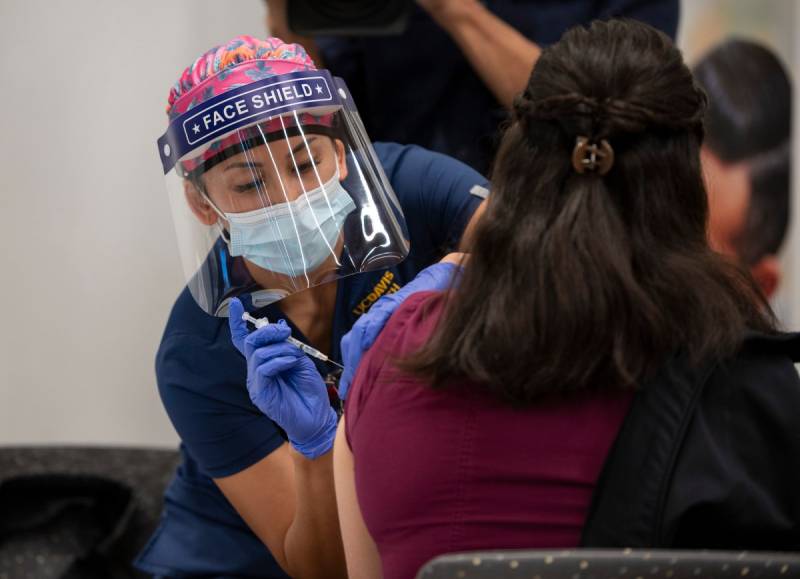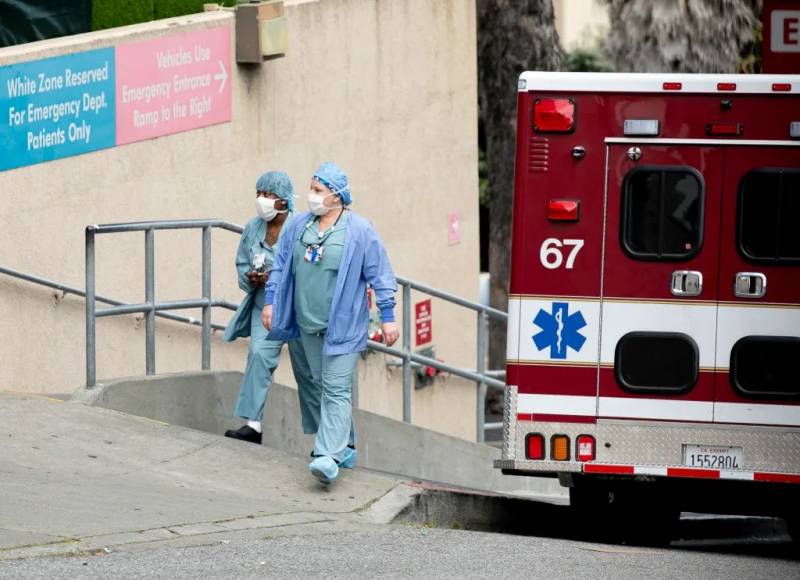State and federal vaccine mandates have helped close the gap on vaccination disparities among Keck’s health care workers, which mirror those in the general population, Osorno said. About 99% of Keck’s physicians are vaccinated but other employee groups are less likely to be fully vaccinated.
“Earlier we saw lower vaccination rates in cleaning and cafeteria staff, which overlaps with Latino and Black populations significantly,” Osorno said.
Statewide, people who identify as Latino have received 29.8% of vaccines administered (at least one dose of the vaccine) despite making up 39.4% of the vaccine-eligible population. African Americans make up 5.7% of the state’s vaccine-eligible population, but have only received 4.2% of vaccines administered, according to state data.
“That to me is one of the saddest statistics coming out of the pandemic — the continued disparity of vaccination among Blacks and Latinos,” Osorno said. “Being Latino myself, it’s horrendously painful.”
Education campaigns and individual conversations with Keck employees who were concerned about side effects and other issues helped raise the vaccination rate for cleaning staff from 25% to 80%.
The state order does not apply to dental offices, although they must comply with a previous order that allows employees to undergo regular COVID-19 testing in lieu of vaccination, the California Dental Association said.
Booster shots unlikely to affect mandate — for now
The state deadline comes one week after the federal government authorized Pfizer booster shots for those who work in high-risk settings, including health care.
Although the Centers for Disease Control and Prevention indicated it would not yet change its definition of “fully vaccinated” to include three shots instead of two, California agencies are monitoring federal recommendations and have released a statewide vaccination plan, CaliforniHealth and Human Services Secretary Dr. Mark Ghaly said last week.
“We are preparing and considering what it will mean for the 2.5 million health care workers in California and looking at how it impacts the requirements for so many of those individuals to be vaccinated,” Ghaly said.
For the moment, there are no plans to adjust the statewide vaccination order, according to the California Department of Public Health, especially since those who received the Moderna or Johnson & Johnson shots are not eligible for a booster.
“Everything we’ve heard so far is that boosters would probably be optional,” Osorno said.
Pockets of opposition remain
In some areas of the state where masking and vaccination protests are widespread, hundreds of employees have submitted exemption requests. In San Diego, 700 employees at Sharp HealthCare requested religious waivers and 100 requested medical waivers, according to Executive Vice President Brett McClain. As of two weeks ago, about 88% of Sharp’s staff were fully vaccinated. Down the road at Scripps Health, 571 employees requested waivers, and 93% are fully or partially vaccinated, a spokesperson told CalMatters.
“Close to 90% of [requests] right now are generally in the sense of somebody who identifies as Christian … stated around ‘my religion tells me my body is my body, and I control what goes into it,’” McClain said. Waiver requests have also stated religious opposition to the use of stem cells in the creation of vaccines, although the coronavirus vaccine does not contain stem cells.
There are enough holdouts to worry Sharp administrators faced with escalating patient numbers and dwindling staff due to pandemic-related burnout. Turnover among some nursing departments has doubled in the past six months, McClain said.
“My concern is we’ve got about 20,000 employees and we still have about 1,000 employees who have not been vaccinated and have not applied for an exemption,” McClain said. “We’re getting to crunch time for sure.”
Those employees have stated they are going to leave the state or leave health care, he said, but President Biden’s sweeping vaccine mandate for large employers and federal contractors will make it increasingly difficult for the unvaccinated to find alternate employment.
“This is going to be almost every employer in the country,” Keck Medicine’s Osorno said. “This is not just us. We believe very heavily in vaccination, but this is something that [workers] are going to face everywhere.”


